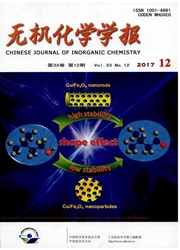

 中文摘要:
中文摘要:
本文采用密度泛函方法结合周期性平板模型,研究了氧原子和氧分子在完整和存在缺陷的Cu2O(111)表面的吸附。计算结果表明氧原子倾向于吸附在配位饱和的CuCSA位,而对于氧分子,则强烈倾向于吸附在配位不饱和的CuCUS位。氧分子在含有氧空位的缺陷表面的优势吸附位为平行吸附于空位上方的桥位。过渡态的计算表明氧分子在缺陷表面的解离是一个活化能很小的放热过程。
 英文摘要:
英文摘要:
Interaction of atomic and molecular oxygen with perfect and defective Cu2O(111) surfaces has been studied by periodic density functional theory coupled with slab models. Different kinds of possible modes of O and O2 adsorbed on Cu2O(111) surface and possible dissociation pathways were calculated. Meanwhile, different electronic states, i.e., the singlet and the triplet states were considered in the computation. The optimization of the geometry, calculation of the adsorption energy, vibrational frequency and analysis of the Mulliken population were carried out. The results indicate that CuCSA site is slightly more favorable than CuCUS for O adsorption, and for O2 adsorption over perfect surface, CuCUS site is the most advantageous position, especially for O2 with end-on type. For O2 adsorption over the deficient surface, it has a larger adsorption energy compared to O2 adsorption over the perfect surface and the O-O bond strength is considerably weakened when O2 lies flatly on the oxygen vacancy site and lies flatly over 1-vacancy bridge site. And the oxygen adspecies is characteristic of a classical O2^- ion on perfect surface, whereas is O2^2- ion on oxygen-deficient surface. The calculations for transition states show that the dissociation reaction of O2 on deficient surface is highly exothermic with a very small barrier height.
 同期刊论文项目
同期刊论文项目
 同项目期刊论文
同项目期刊论文
 期刊信息
期刊信息
